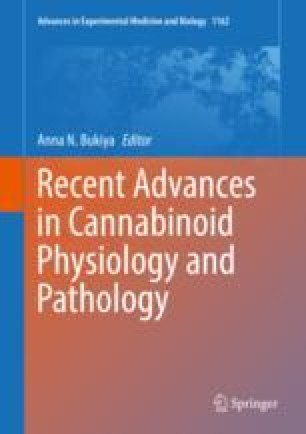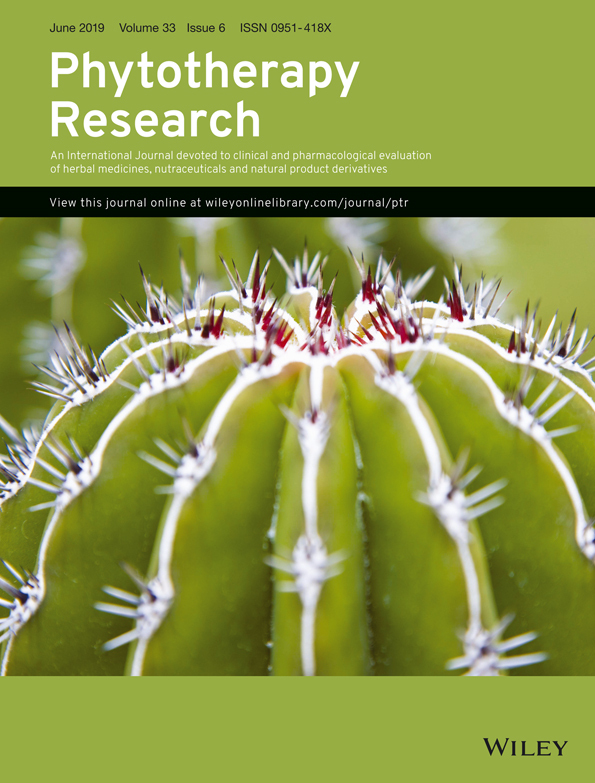 “The family of chemical structures that interact with a cannabinoid receptor are broadly termed cannabinoids. Traditionally known for their psychotropic effects and their use as palliative medicine in cancer, cannabinoids are very versatile and are known to interact with several orphan receptors besides cannabinoid receptors (CBR) in the body. Recent studies have shown that several key pathways involved in cell growth, differentiation and, even metabolism and apoptosis crosstalk with cannabinoid signaling. Several of these pathways including AKT, EGFR, and mTOR are known to contribute to tumor development and metastasis, and cannabinoids may reverse their effects, thereby by inducing apoptosis, autophagy and modulating the immune system. In this book chapter, we explore how cannabinoids regulate diverse signaling mechanisms in cancer and immune cells within the tumor microenvironment and whether they impart a therapeutic effect. We also provide some important insight into the role of cannabinoids in cellular and whole body metabolism in the context of tumor inhibition. Finally, we highlight recent and ongoing clinical trials that include cannabinoids as a therapeutic strategy and several combinational approaches towards novel therapeutic opportunities in several invasive cancer conditions.”
“The family of chemical structures that interact with a cannabinoid receptor are broadly termed cannabinoids. Traditionally known for their psychotropic effects and their use as palliative medicine in cancer, cannabinoids are very versatile and are known to interact with several orphan receptors besides cannabinoid receptors (CBR) in the body. Recent studies have shown that several key pathways involved in cell growth, differentiation and, even metabolism and apoptosis crosstalk with cannabinoid signaling. Several of these pathways including AKT, EGFR, and mTOR are known to contribute to tumor development and metastasis, and cannabinoids may reverse their effects, thereby by inducing apoptosis, autophagy and modulating the immune system. In this book chapter, we explore how cannabinoids regulate diverse signaling mechanisms in cancer and immune cells within the tumor microenvironment and whether they impart a therapeutic effect. We also provide some important insight into the role of cannabinoids in cellular and whole body metabolism in the context of tumor inhibition. Finally, we highlight recent and ongoing clinical trials that include cannabinoids as a therapeutic strategy and several combinational approaches towards novel therapeutic opportunities in several invasive cancer conditions.”
https://www.ncbi.nlm.nih.gov/pubmed/31332734
https://link.springer.com/chapter/10.1007%2F978-3-030-21737-2_4

 “We have previously reported that endocannabinoids modulate permeability in Caco-2 cells under inflammatory conditions and hypothesised in the present study that endocannabinoids could also modulate permeability in ischemia/reperfusion.
“We have previously reported that endocannabinoids modulate permeability in Caco-2 cells under inflammatory conditions and hypothesised in the present study that endocannabinoids could also modulate permeability in ischemia/reperfusion. “Cognitive impairment is a major source of disability in schizophrenia and current antipsychotic drugs (APDs) have minimal efficacy for this symptom domain.
“Cognitive impairment is a major source of disability in schizophrenia and current antipsychotic drugs (APDs) have minimal efficacy for this symptom domain. “Delta-9-tetrahydrocannabinol (THC) is the primary psychoactive compound in
“Delta-9-tetrahydrocannabinol (THC) is the primary psychoactive compound in  “Current pharmacotherapy of Parkinson’s disease (PD) is palliative and unable to modify the progression of neurodegeneration. Treatments that can improve patients’ quality of life with fewer side effects are needed, but not yet available.
“Current pharmacotherapy of Parkinson’s disease (PD) is palliative and unable to modify the progression of neurodegeneration. Treatments that can improve patients’ quality of life with fewer side effects are needed, but not yet available. “Osteoporosis is a skeletal disease with decreased bone mass and alteration in microarchitecture of bone tissue, and these changes put patients in risk of bone fracture. As a common symptom of osteoporosis and complication of osteoporotic fracture, chronic pain is a headache for clinicians. Nonsteroidal anti-inflammatory drugs (NSAIDs), selective COX-2 inhibitors and opioid drugs can temporarily reduce osteoporotic pain but have relevant side effects, such as addiction, tolerability and safety. The review summarized the recent advancements in the study of CB receptors in osteoporosis and osteoporotic pain and related mechanisms.
“Osteoporosis is a skeletal disease with decreased bone mass and alteration in microarchitecture of bone tissue, and these changes put patients in risk of bone fracture. As a common symptom of osteoporosis and complication of osteoporotic fracture, chronic pain is a headache for clinicians. Nonsteroidal anti-inflammatory drugs (NSAIDs), selective COX-2 inhibitors and opioid drugs can temporarily reduce osteoporotic pain but have relevant side effects, such as addiction, tolerability and safety. The review summarized the recent advancements in the study of CB receptors in osteoporosis and osteoporotic pain and related mechanisms. “The
“The  “Chronic, therapy-resistant pruritus often fails to respond to standard measures so new therapeutic approaches are needed.
“Chronic, therapy-resistant pruritus often fails to respond to standard measures so new therapeutic approaches are needed. “The present study investigates the potential effect of a Cannabis sativa L. ethanolic extract standardized in cannabidiol as antiinflammatory agent in the skin. The extract inhibited the release of mediators of inflammation involved in wound healing and inflammatory processes occurring in the skin. Cannabis extract and cannabidiol showed different effects on the release of interleukin-8 and vascular endothelial growth factor, which are both mediators whose genes are dependent on NF-κB. Our findings provide new insights into the potential effect of Cannabis extracts against inflammation-based skin diseases.”
“The present study investigates the potential effect of a Cannabis sativa L. ethanolic extract standardized in cannabidiol as antiinflammatory agent in the skin. The extract inhibited the release of mediators of inflammation involved in wound healing and inflammatory processes occurring in the skin. Cannabis extract and cannabidiol showed different effects on the release of interleukin-8 and vascular endothelial growth factor, which are both mediators whose genes are dependent on NF-κB. Our findings provide new insights into the potential effect of Cannabis extracts against inflammation-based skin diseases.”